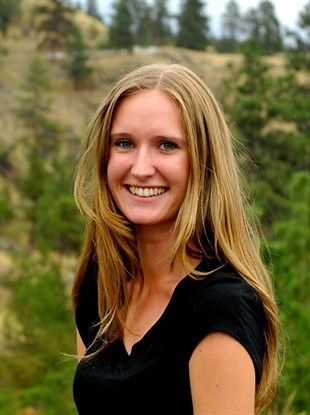
Charlotte Helston is the Vernon reporter for InfoNews.
(ADAM PROSKIW / iNFOnews.ca)
July 08, 2016 - 11:06 AM
Remember that adorable video from a few years ago of a deer nuzzling a boy at a Vernon beach? Pretty cute, right? Great photo-op. Too bad it was basically a death sentence.
Like so many wild animals nowadays, that deer developed a habit for approaching people — particularly those with coolers of food — prompting the Conservation Service to put it down as a public safety precaution. And before you get angry at the conservation officers for killing an innocent animal, let me remind you — they weren’t the ones who fed it and videotaped it. Remember too that deer are not harmless fur-ball Bambis — they are wild animals with sharp teeth and hooves that can pack a lethal blow.
If the deer was scared away instead of encouraged during its first encounter with humans — which quite possibly occurred long before it became a YouTube sensation — perhaps it would still be alive.
It’s not as fun to shoo away a deer, bang pots and pans, or honk your car horn, and it won’t get you that close-up photo, but is a picture really worth it if it costs the animal its life?
Wildlife tends to get killed when it displays non-wild behaviour — like devouring the contents of a garbage can or rubbing its head on a kid. But it all starts with us. How we react to wildlife has a direct impact on how the animal will behave. So really, we need to change our behaviour.
Number one, that means not feeding wildlife, either intentionally or unintentionally. Believe it or not, there are people who actually leave out bags of apples or pellet food purposefully for deer. Others might inadvertently attract wildlife by leaving out birdseed, unpicked fruit, uncleaned barbecues, and garbage.
We also live in a day and age where the term ‘fawn-napping’ has been added into our vocabulary. Well-meaning people — probably self-professed animal lovers — will see a lone fawn and assume it’s an orphan. So they scoop up the baby deer (who can resist a furry baby animal with those shiny, oil drop eyes?) and take it home.
Thing is, mother deer often leave their young alone for long periods of time. To avoid attracting predators, they may only return a few times a day to nurse (at birth, fawns themselves don’t actually have a scent, which protects them from predators.)
Just to recap: Number one, don’t feed wildlife. Number two, don’t touch them or take them home.
It may seem like common sense, but a lot of people aren’t getting the message. Deer-related complaints are soaring across the Okanagan, and many, many bears have been put down after following the aroma of pungent garbage into residential neighbourhoods. It also appears to be quite common for deer to get hung up on fences during their forays into urban environments. Just look at these horrific photos sent to us by the conservation service to see what I mean (graphic content warning.) Wildlife belongs in the wild, not the urban environment.
There are, of course, other issues at play here, like loss of natural habitat and the fact that wildlife is being squeezed into urban areas. But changing our behaviour is a good start, and one we can put into action immediately. It will 100 per cent save animals’ lives, and keep those pretty deer far off on the crest of a hill, just close enough for your zoom lens to capture a scenic picture, and just far enough away to keep them wild.
While we might think we’re helping when we throw food to a wild animal — even a Canada Goose, for example — or try to rescue a sleeping fawn, we’re not. In most cases, we are killing them with kindness.
— Charlotte Helston is the Vernon reporter for iNFOnews.ca.
News from © iNFOnews, 2016